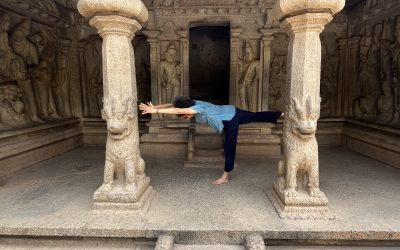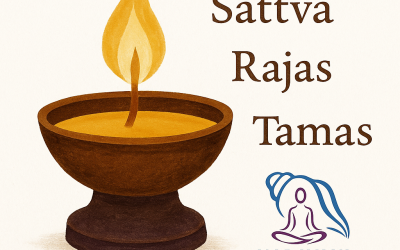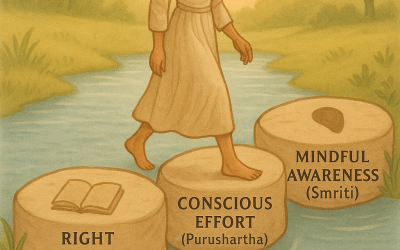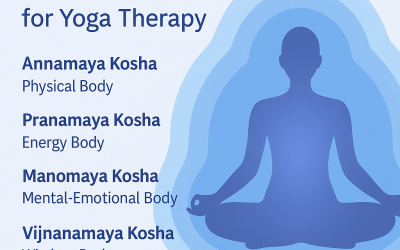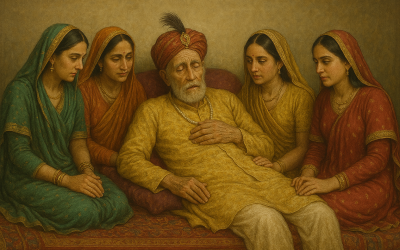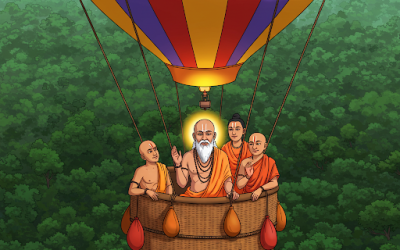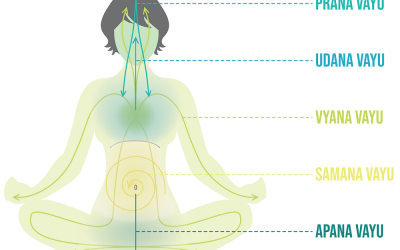Beyond the Mat: Practices & Resources
Welcome to Yoga Therapy Insights, where we explore valuable knowledge from yoga therapy to support areas such as sleep quality, joint health, stress resilience, nervous system regulation, and much more.
Whether you’re new to yoga therapy or looking to deepen your practice, these insights will guide you in enhancing your body-mind connection. Join us as we uncover ways to use yoga therapy for healing, empowerment, and lasting transformation.
Balance in Yoga Therapy: A Multi-Dimensional Concept
Balance in Yoga Therapy isn’t just about standing steady—it’s about aligning body, mind, energy, lifestyle, and spirit. Through movement, breath, rhythm, and awareness, yoga therapy guides us back to center—again and again.
Sattva, Rajas, Tamas: What They Mean for Your Mind, Body, and Healing
In yoga therapy, understanding how the mind, body, and energy interact is key to healing. Ancient teachings describe these dynamics through the lens of the three gunas—Sattva (clarity), Rajas (activity), and Tamas (stability). Rather than labeling them as good or bad, yoga helps us work with these qualities to support balance, insight, and transformation. This article explores how the gunas shape our daily experiences—and how yoga therapy gently restores harmony through breath, movement, rest, and awareness.
Three Pillars of Inner Transformation: Ancient Wisdom for Modern Lives
In yoga therapy, transformation doesn’t come as a flash of enlightenment—it unfolds through quiet, consistent moments of awareness. It’s in how we breathe through resistance, how we return to the body when the mind wanders, and how we meet our own suffering with curiosity instead of judgment.
This practice isn’t about fixing what’s broken. It’s about uncovering what’s already whole beneath the noise. The body holds memory. The breath holds insight. And through guided movement, stillness, and reflection, yoga therapy offers a safe space to meet yourself—gently, honestly, and without rush.
Real healing, the Upanishads remind us, begins when knowledge meets personal effort and is held in steady awareness. In this way, yoga therapy becomes not just a practice, but a path.
Burnout & Exhaustion: Ancient Ayurvedic Wisdom for a Modern Crisis
In a culture that glorifies hustle and productivity, Ayurveda offers a quiet warning: too much of anything—even good things—can lead to imbalance. Atiyoga, or excess, isn’t just about overwork; it’s about crossing the natural thresholds of body and mind. Whether it’s talking too much, exercising too hard, or even sleeping too long, Ayurveda reminds us that true health lies not in extremes, but in balance.
Pancha Kosha in Practice: Applying Ancient Wisdom in Yoga Therapy
The Pancha Kosha (Five Sheaths) model, rooted in the Taittiriya Upanishad, offers a profound lens for understanding the multidimensional nature of human health. It teaches that well-being isn’t simply the absence of symptoms—but harmony across five...
The Man with Four Wives
This parable lives in the oral tradition of Vedantic teaching—not tied to a specific scripture, but rich with timeless wisdom. It reminds us that at the end of life, everything we tend to prioritize—the body, our relationships, our possessions—must stay behind. The only part that continues the journey is the soul, often the most neglected during our lifetime.
In yoga therapy, this story becomes a mirror. True health is not complete without tending to our spiritual dimension. We may care for the body, manage emotions, and balance the mind—but if the soul is forgotten, something essential remains unwell. Yoga therapy invites us to care for all layers of our being, including the one that walks with us when all else falls away.
Reflections on Studying Yoga Therapy in India & the West
contrast between traditional Indian yoga therapy and the Western scientific approach. In India, yoga is deeply interwoven with Ayurveda, spiritual philosophy, and classical texts, emphasizing personal transformation over clinical protocols. In contrast, Western yoga therapy integrates neuroscience, psychophysiology, and evidence-based research, ensuring credibility within healthcare settings.
Both approaches are essential. India instilled discipline, direct experience, and a holistic healing framework, while the West provided scientific validation and structured methodology. This integrative perspective allows me to bridge ancient wisdom with modern therapy, making yoga both authentic and accessible.
Between Dharma and Adharma: The Space of Surrender
There is a moment when the mind cannot tell right from wrong.
A Rishi once asked his disciples to judge: Was the tiger right to kill the gazelle to feed its cubs? Was the gazelle wrong for not protecting its young?
Each disciple tried to decide who was righteous and who was not. And each fell—until one simply admitted,
“I do not know.”
In the Bhagavad Gita, Krishna says,
“Abandon all varieties of dharma and surrender unto Me alone.”
When the path is unclear, when the heart is torn between Dharma and Adharma, there is another way.
Surrender.
Not giving up—but letting go.
Not passivity—but trust.
In this space beyond judgment, we find peace.
And often, it is there that true healing begins.
Swasthavritham: The Science of Healthy Lifestyle in Yoga Therapy
yoga therapy, true healing extends beyond symptom relief—it’s about cultivating balance in every aspect of life. Swasthavritham, the Ayurvedic science of healthy living, offers a time-tested framework for preventive care and holistic well-being. By integrating its principles into personalized yoga therapy plans, we support clients in aligning with their natural rhythms, enhancing vitality, and fostering resilience. This blog explores how Swasthavritham enriches modern Yoga Cikitsa, providing practical tools for sustainable health and harmony.
Understanding the Pancha Pranas: The Five Vital Energies
In yogic and Ayurvedic philosophy, Prana refers to the vital life force that sustains all physical, mental, and spiritual functions. This energy flows through Nadis (subtle energy channels) and interacts with Chakras, ensuring the body’s proper functioning. The five subdivisions of Prana, known as Pancha Pranas or Pancha Vayus, regulate different physiological and energetic processes. These five Pranas—Prana Vayu, Apana Vayu, Samana Vayu, Udana Vayu, and Vyana Vayu—are considered sub-divisions of Vata Dosha in Ayurveda.

